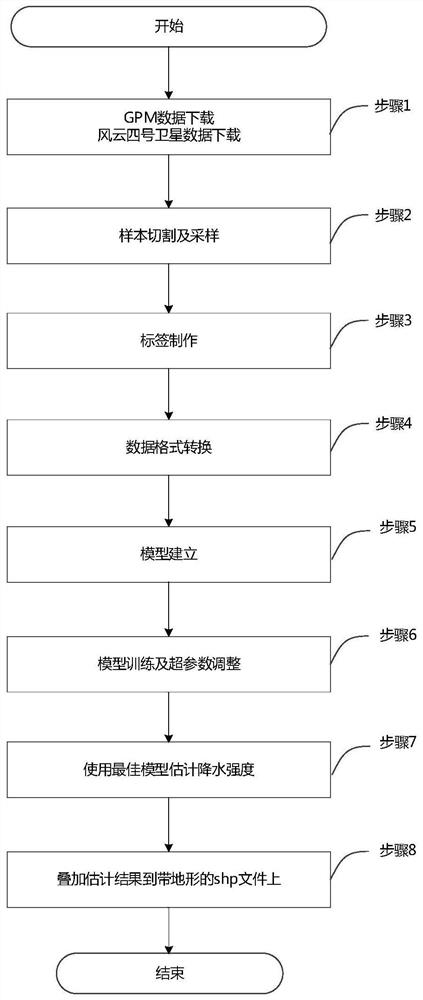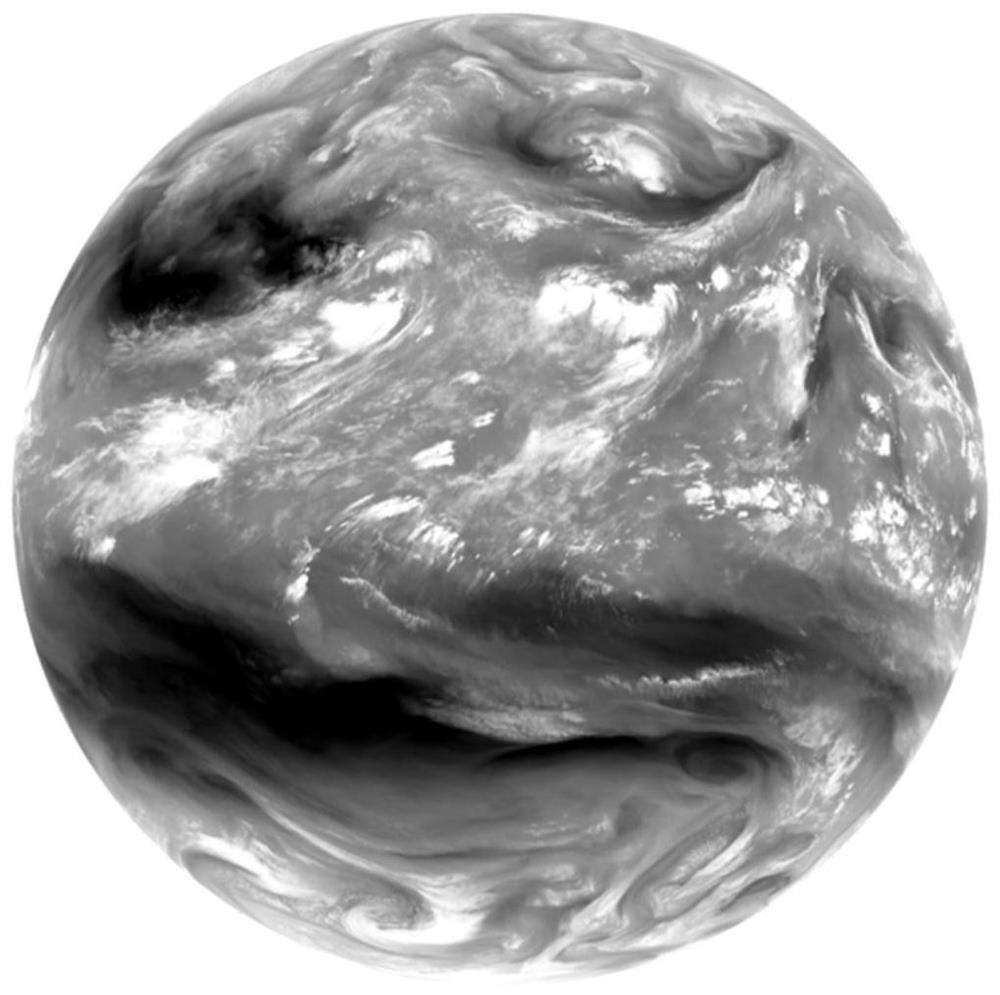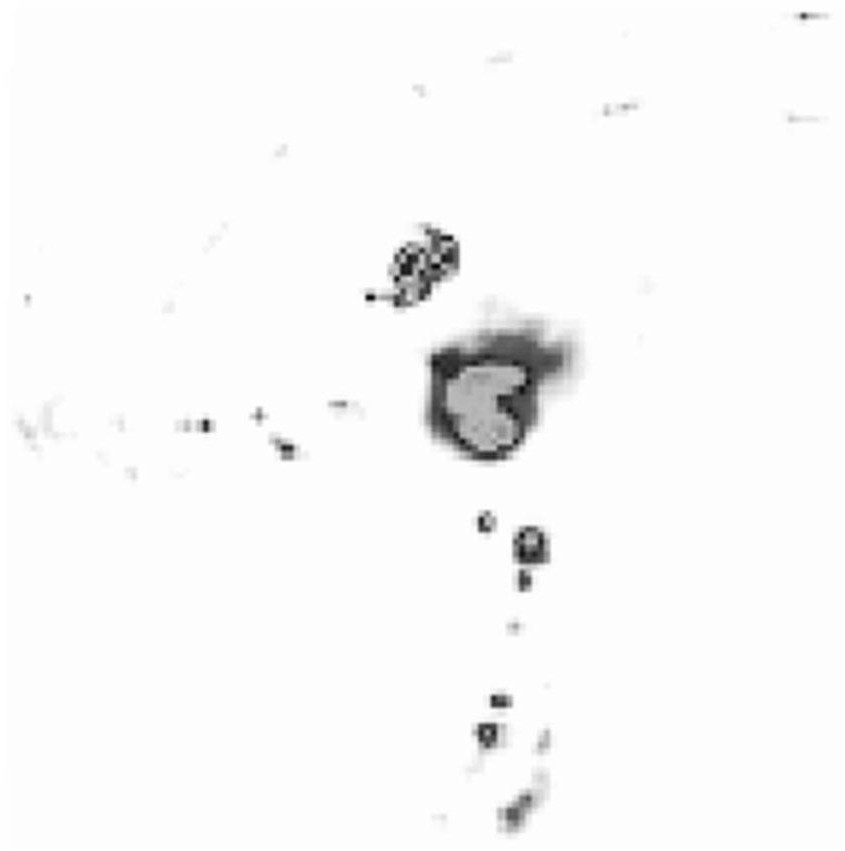Precipitation intensity estimation method based on deep learning
A deep learning and intensity technology, applied in the field of remote sensing image processing, can solve the problems of inability to obtain precipitation estimation, insufficient use of infrared and water vapor band feature information, loss of feature information, etc., to achieve real-time precipitation intensity estimation results and improve convergence speed , the effect of easy operation
- Summary
- Abstract
- Description
- Claims
- Application Information
AI Technical Summary
Problems solved by technology
Method used
Image
Examples
Embodiment Construction
[0041]Embodiments of the present invention will be described below in conjunction with the accompanying drawings.
[0042] like figure 1 As shown, the present invention has designed a kind of precipitation intensity estimation method based on deep learning, and this method specifically comprises the following steps:
[0043] Step 1: According to the historical precipitation data, obtain the meteorological satellite data of Quanyuanfeng-4 from the Fengyun Satellite Remote Sensing Data Service Network, and obtain the following figure 2 The FY-4A full disk data shown, and the precipitation data of the precipitation product GPM-IMERG obtained from NASA's official website, such as image 3 shown; execute step 2;
[0044] Step 2: According to the obtained meteorological satellite data, first cut out the required estimated area; then, use the function gdal.Warp in python to correct the meteorological satellite data, and save it in the form of an array, and then perform step 3;
...
PUM
 Login to View More
Login to View More Abstract
Description
Claims
Application Information
 Login to View More
Login to View More - R&D
- Intellectual Property
- Life Sciences
- Materials
- Tech Scout
- Unparalleled Data Quality
- Higher Quality Content
- 60% Fewer Hallucinations
Browse by: Latest US Patents, China's latest patents, Technical Efficacy Thesaurus, Application Domain, Technology Topic, Popular Technical Reports.
© 2025 PatSnap. All rights reserved.Legal|Privacy policy|Modern Slavery Act Transparency Statement|Sitemap|About US| Contact US: help@patsnap.com



